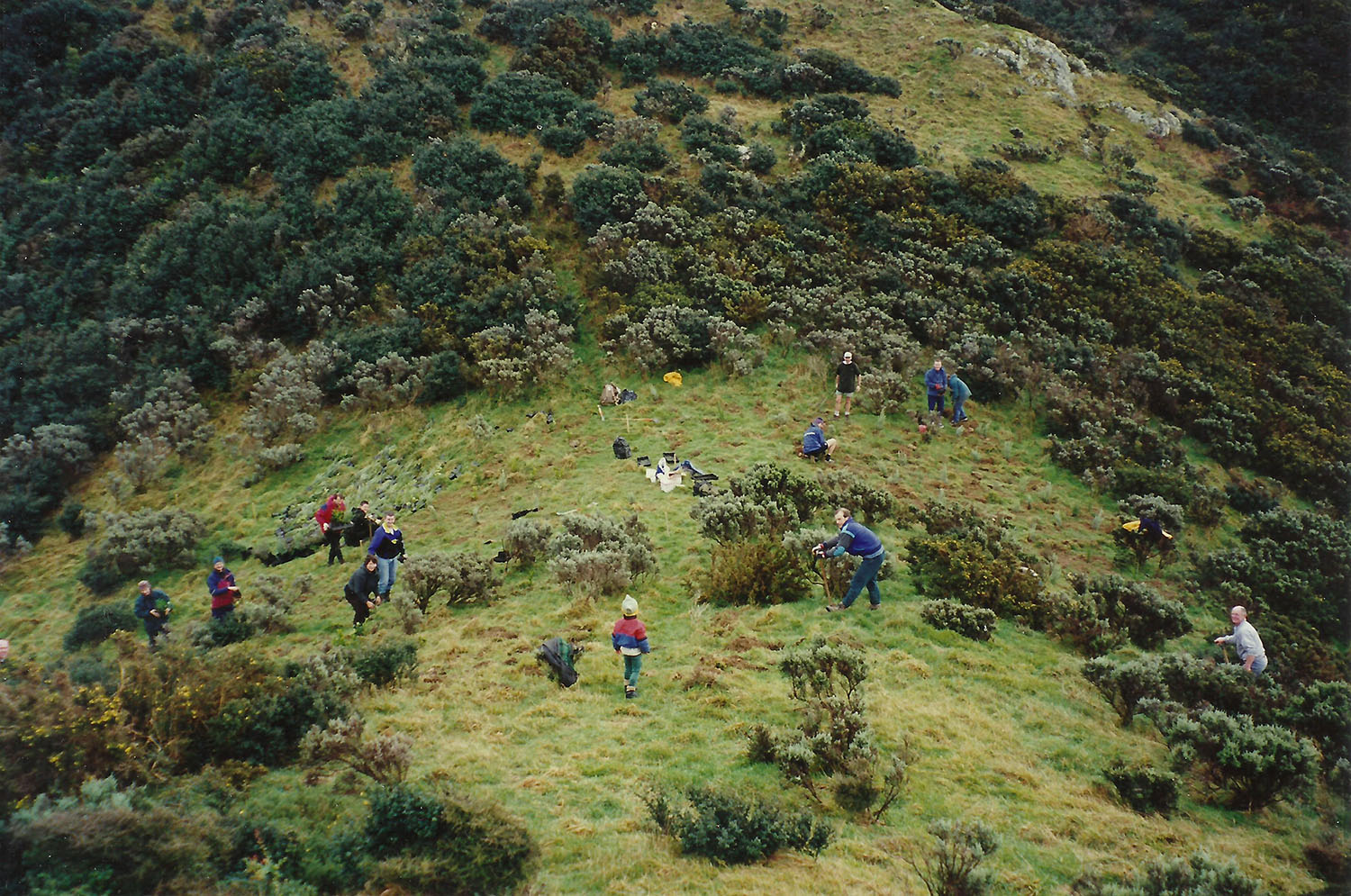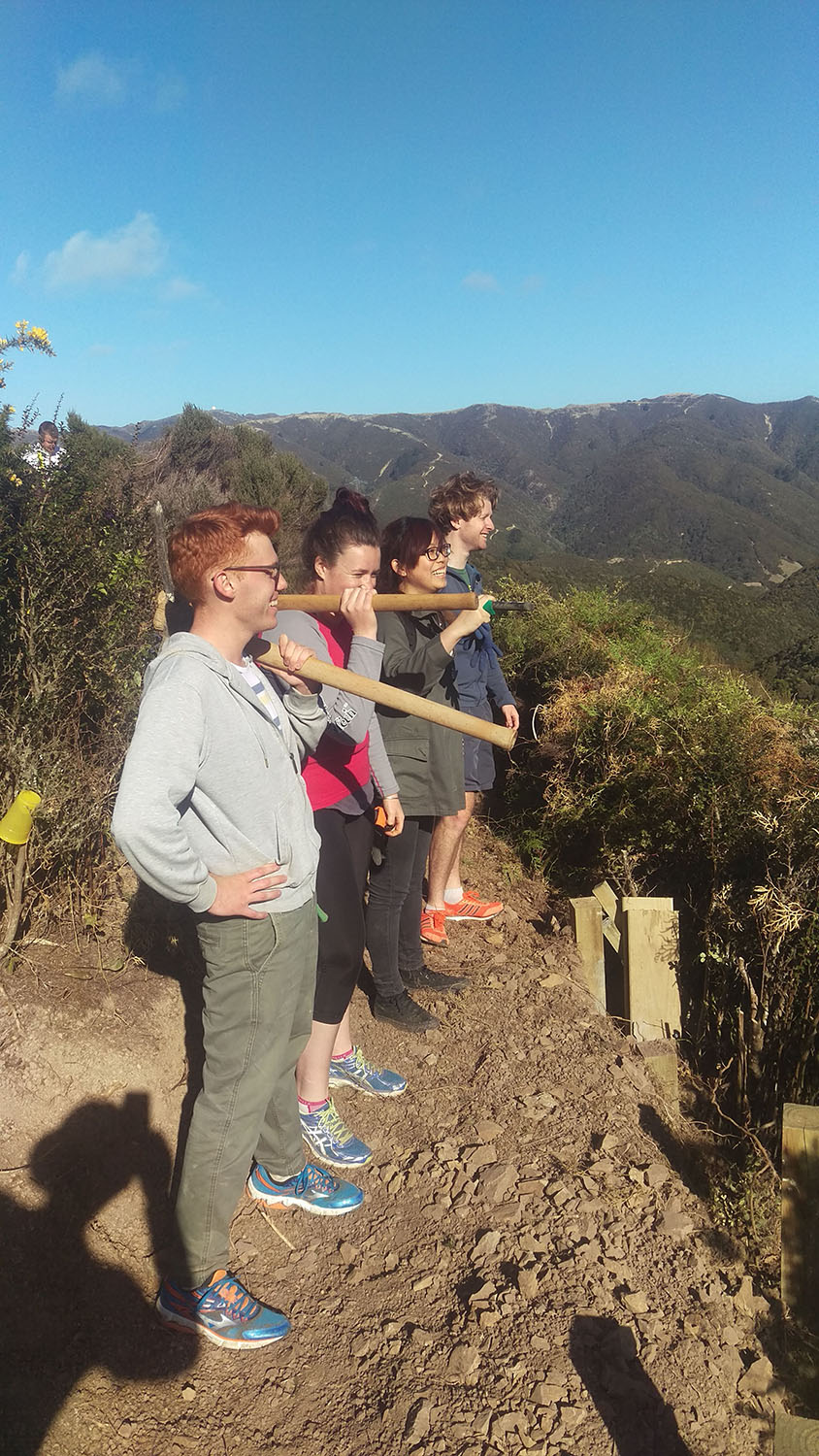
Mākara Peak Mountain Bike Park has 250 hectares of native bush at various stages of regeneration and makes up an important part of Wellington’s Outer Green Belt. The regenerating bush provides an exciting riding environment as well as protecting park users from strong wind and sun on a hot day.
Mākara Peak is classified as a Key Native Ecosystem and is Wellington’s first Ministry for Primary Industries certified ‘carbon sink’ (a forest set aside for atmospheric carbon dioxide absorption). Close to Zealandia sanctuary and Otari-Wilton’s Bush, the park provides a safe corridor between reserves as well as an important habitat for native birds and other wildlife.
Education through recreation
By encouraging users to become involved with the park developments and restoration, Mākara Peak Bike Park is an example of how conservation, community, and recreation partners can work together.
With the support of the Wellington City Council and Greater Wellington Regional Council, this volunteer-driven effort managed by Mākara Peak Supporters encourages park users to learn about their surrounding environment.
History
Mākara Peak was cleared of native vegetation in the early 1900s and farmed through to the mid-1990s before it was turned into the park it is today. One small remnant of the pre-European forest exists. Since then the Mākara Peak Supporters have been working hard to help restore the area to its natural state and the park has now been classified as a Scenic Reserve.
The Supporters’ restoration efforts
A main goal of the Mākara Peak Mountain Bike Supporters is to restore the park to a healthy, thriving native forest full of native animals. Supporters are assisting this in a variety of ways including pest animal and plant control, protecting and reintroducing rare native plant species and planting thousands of seedlings.
Critter cam
From time to time our conservation committee volunteers use trail cameras to monitor pest animal activity in Mākara Peak. These cameras are motion activated and are used to capture still images of animals of interest. Cameras are set at a low level well away from tracks so are highly unlikely to capture identifying images of human park users. In the unlikely event they do, such images are not retained.





